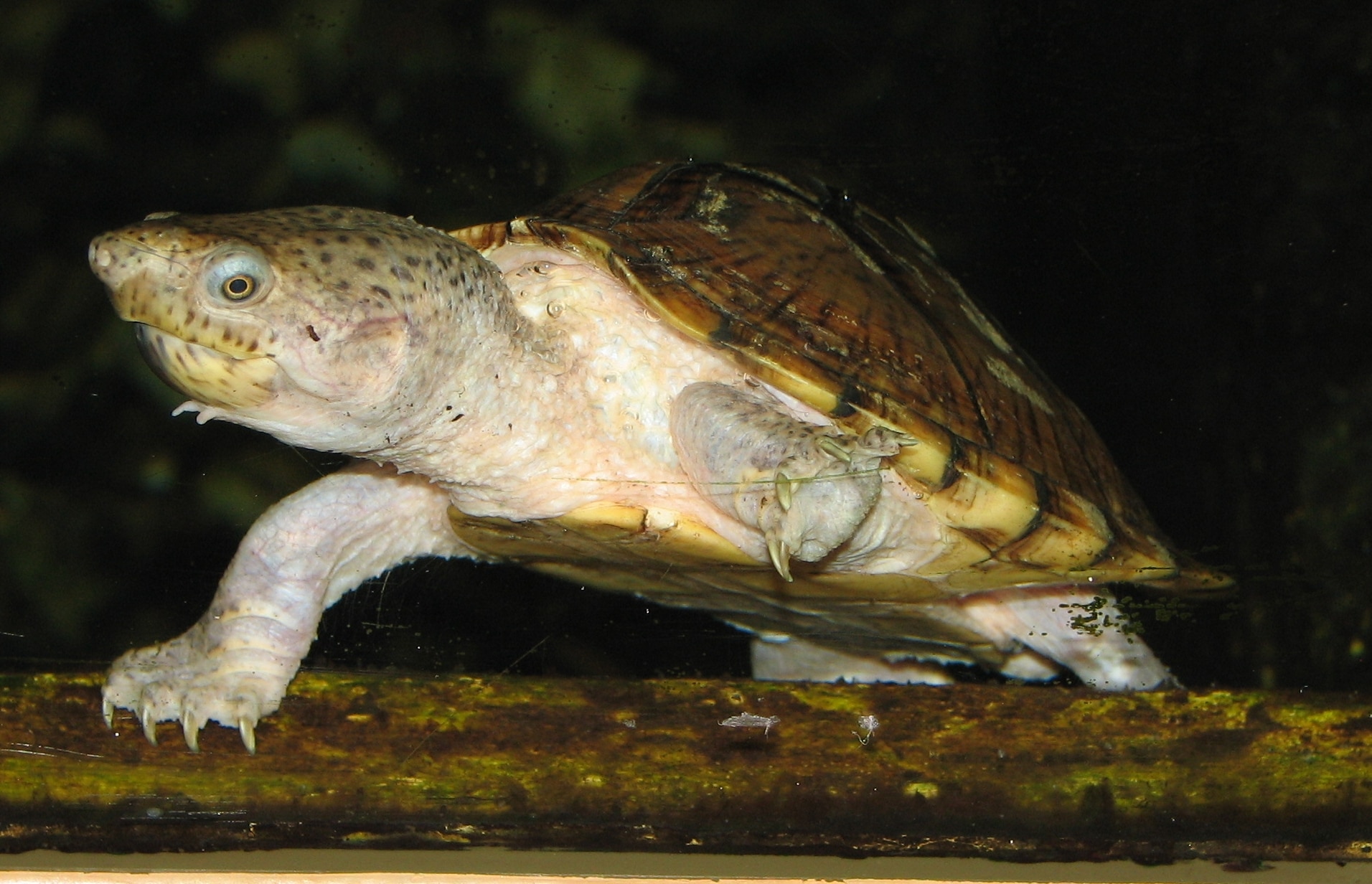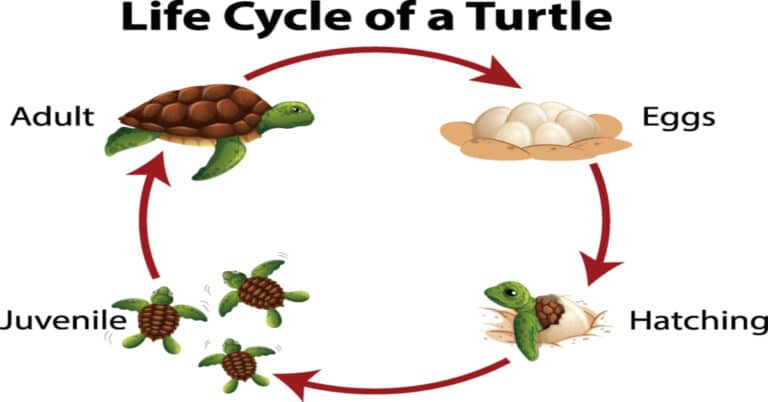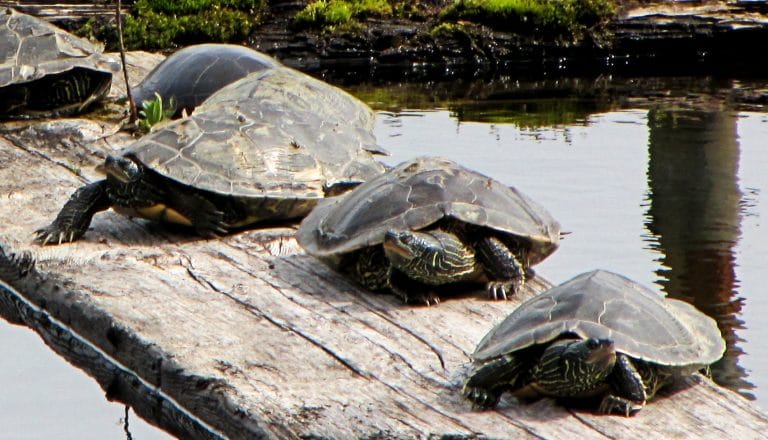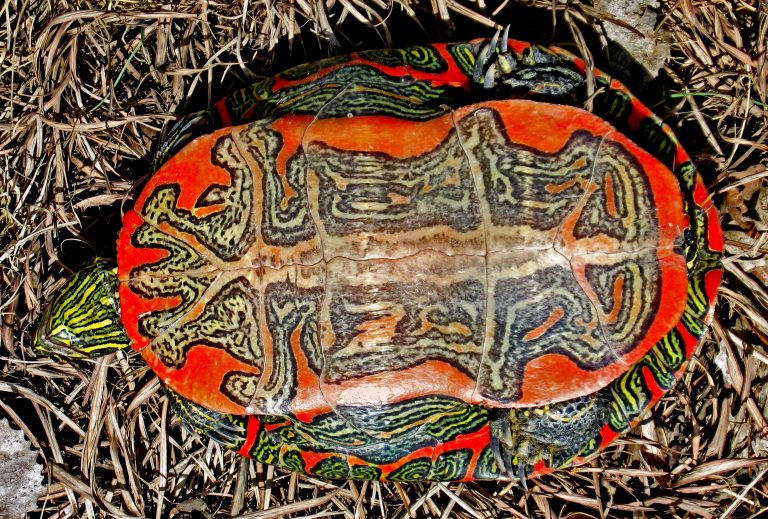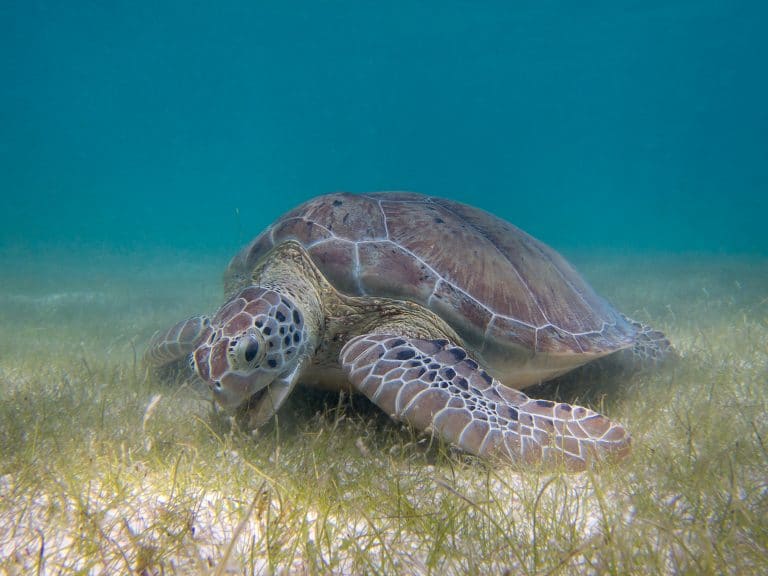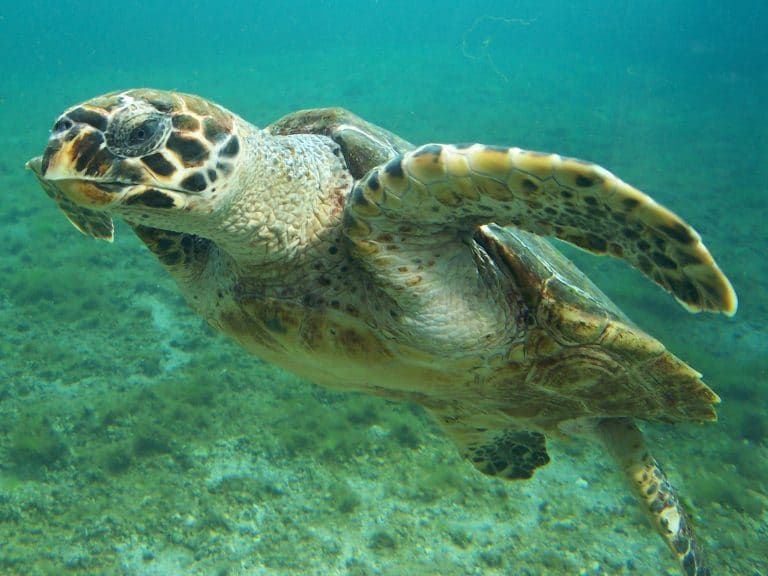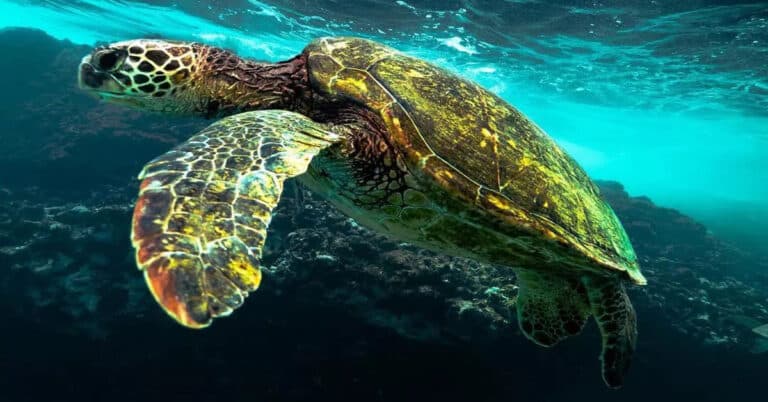Musk Turtle
Scientific Classification
| Kingdom: | Animalia |
| Phylum: | Chordata |
| Subphylum: | Vertebrata |
| Class: | Reptilia |
| Order: | Testudines |
| Family: | Kinosternidae |
| Subfamily: | Kinosterninae |
| Genus: | Sternotherus |
| Species: | S. odoratus |
| Binomial name: | Sternotherus odoratus |
Musk turtle belongs to the species of turtle Stemotherys odoratus, a small group inhabiting southeastern provinces of Canada and most of the regions of the Eastern parts of the United States. It is also called a common musk turtle or stinkpot because it gives out a musky foul smell from the scent glands that are situated on the rim of its carapace, perhaps to drive away the predators for self-defense. While in captivity these turtles do not do this often; however, it is not a problem regarding hygiene. (Your house will not smell bad for keeping one)
Habitat
The common musk turtle normally inhabits areas with water bodies like shallow, clear water lakes, rivulets, and ponds; you find these turtles hardly anywhere else. When they are in water these turtles remain in the shallow part of the water. Sometimes we find them basking on the overhanging branches of trees above the water or submerged fallen tree trunks. Similar to other turtles, these turtles nest on land. Coastline development of real estate is detrimental to their nesting. Their hibernation takes place in the mud below logs or lodges of muskrats.
Anatomy
Stinkpot or musk turtles have high dome-shaped shells, small, brown, gray or black in color. Their length is almost 5.1 to 14cm (2.0 to 5.5”) and their aggregate weight is the 603 GM (1,329lb). Their legs are short and they have long necks. You can easily identify them from among the swimming turtles because of their yellow colored striped neck. Male turtles normally look different from the females because of their noticeable long tails with the protruding spikes at the tip of their tail and anal vent you see below its tail is far beyond the plastron of the males. Females are significantly much bigger than the males. Their heads are more or less triangular in shape. From the nose to the neck there are yellowish-green colored stripes. The head has a sharp beak and pointed snout. On its throat and chin you find Barbels. They respire underwater with the help of bud-like papillae covering on their tongues.
Behavior
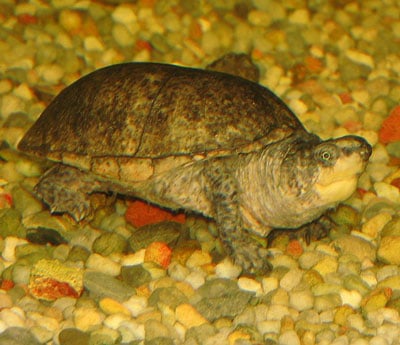
The manner in which the musk turtle defends itself is conspicuous. Whenever troubled, the musk turtle lets out a dirty-unpleasant smelling liquid from its musk glands. It got this name “stinkpot” on account of this defense mechanism. The male is very vicious and bites without thinking. The nocturnal common musk turtles display a unique behavior. When foraging unlike other turtles, they walk at the bottom of the water body, but do not swim.
Diet
As they are carnivores, they consume plenty of invertebrates that live in the water, even snails, crayfish, freshwater clams, tadpoles, a variety of insects and aquatic larvae. In addition, they consume clarion and fish. A young turtle is mostly carnivorous, but later on, as it matures, it gradually starts liking the taste of aquatic plants. Turtles in the wild will unhesitatingly bite if troubled. Be cautious while handling a musk turtle, because its neck reaches till its hind feet.
Breeding and Reproduction
The females lay 2 – 9 hard-shelled elliptical shaped eggs during spring season. They lay their eggs in shallow holes or under the rubbish on the seashore. They have a unique way in sharing the sites of nesting. Once, 16 eggs were found under a log. It is towards the end of the summer or the beginning of fall that the eggs hatch. Their mortality rate on account of the predation of eggs is very high; this happens to many varieties of turtles. Sometimes, the predators damage a large portion of the nests. The size of the hatchling is below 1” in length with a shell that becomes extremely ridged. This reduces as they grow, and ultimately the shell become domed and smooth just like other turtles. They live for many years. Examples of such turtles in custody show a life span of 50 years.
As a Pet
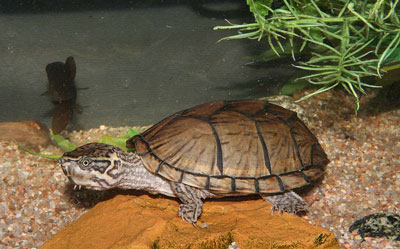
Housing
The ideal size of an aquarium with a lid and vent for a pair is 30” x 12” x 15”. A “turtle dock” like a basking spot is essential to bask and rest under light and heat. Provide a few dry spaces for the babies since they are not yet good swimmers.
Substrate and Vegetation:
Providing smooth pebbles or fine aquarium sand will aid your turtle in walking down the bottom. Keep in your tank ceramic plant pots, rocks bog weed and other articles for them to explore and hide under. The common musk turtle favors plants, use live or artificial ones, live plants need UVB lighting for growth.
Food
In nature, the common musk turtles are omnivores. They consume both insects and plants; whereas when they are captives they have an inclination to a carnivorous diet. Feeding them becomes effortless. They enjoy eating the items given below:
- Chopped mussel
- Crickets
- Frozen bloodworm
- Roaches
- Mealworm
- Turtle food that is frozen
- Chopped earthworms
- Duckweed
- Turtle pellets – young ones love Zoo MED Hatchling Formula
- Aquatic snails
- Chopped fish – select fresh water fish rather than sea fish
- Chopped cockle
It is effortless to bring up an ordinary musk turtle. Feed your reptiles with 50-60% of Reptomin diet, the remaining nutrients are complete with earthworms, minnows and other commercially available aquatic turtle foods.
Temperature and Light
Provide your pet musk turtle with a temperature ranging between 28 – 30°C and the temperature of water 24 – 26°C. Musk turtles intermittently bask just like the snapping, soft-shelled and other aquatic variety; they in fact receive Vitamin D through their diet.
Heat the water with an aquarium heater and maintain the temperature with ceramic emitters or else, heat bulbs. For your musk turtle to metabolize calcium, provide UV lighting. They require 12 – 14 hours of daytime so, use a specialized fluorescent bulb; UV bulb does not last long and it needs replacement every 6 months.
Maintain the water temperature for the infants at 23 – 26°C (74 – 79°F), keep grownups at a temperature of 20 – 23°C (68 – 73°F). The submersible Exo Terra Turtle aquarium Heater maintains the above temperatures easily. These turtles mess up the food, hence provide a filter to keep the water clean use one that is adjustable or one that has a low-level water flow.
Maintenance
Maintain the water clear and clean. Promptly discard the waste. Partially replace the water every week so that you retain a low nitrate level and keep the gravel are clean.

Having discovered a fondness for insects while pursuing her degree in Biology, Randi Jones was quite bugged to know that people usually dismissed these little creatures as “creepy-crawlies”.

